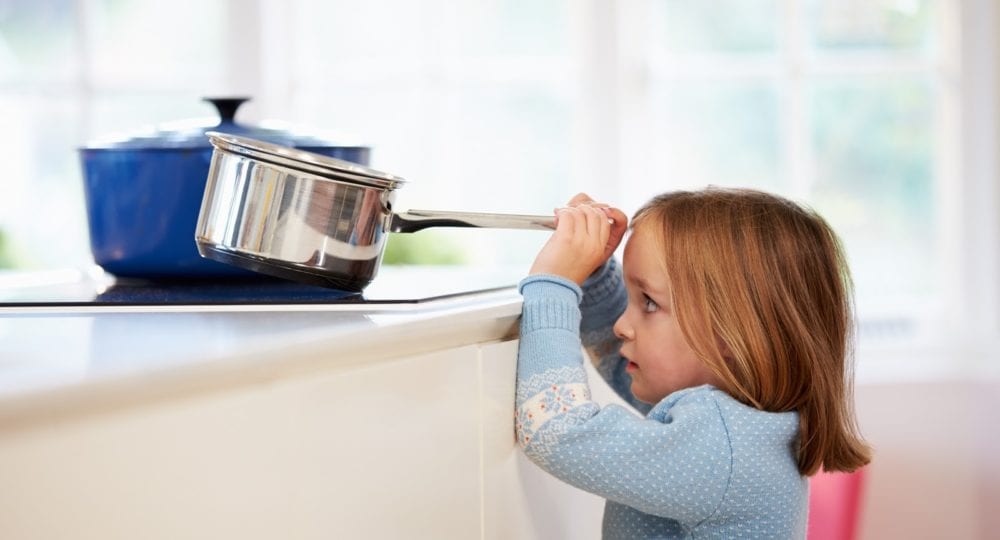National Burn Awareness Week kicks off on February 3rd with this year’s theme being “Scald”.
Approximately every minute, someone in the US sustains a burn injury serious enough to require treatment. Scald burns make up a large portion of these injuries, with children being at particularly high risk. In fact, 62% of people treated in burn centers for scald burns are children under the age of 5.
As explained by the American Burn Association, “Young children have thinner dermal layers than adults, leading to deeper burn injuries at lower temperatures or shorter exposure times. When exposed to the same quantity of hot liquid, a child will sustain burns over a larger percent total body surface area (%TBSA) than an adult.”
“Thin dermis + Small body = Large, deep burns.” – ameriburn.org
Most scald burns happen in the home, with the majority being associated with consumer household appliances and products. In fact, 85-90% of scald burns are related to cooking, drinking, or serving hot liquids.
Did you know?
- Hot water will burn the skin at temperatures much lower than the boiling point. It only takes 3 seconds of exposure to 140-degree water to cause a burn serious enough to require surgery.
- Dangerously high water temperatures were found in 41% of urban homes, with rental properties at greater risk for unsafe levels.
- Coffee is often served at 175 degrees, making it high-risk for causing immediate severe scald burns when spilled.
National Burn Awareness Week is a great opportunity for individuals and families to take a moment to reflect on ways to prevent scald burns and protect themselves and their children from preventable scald burn injuries. The American Burn Association shares some helpful tips on how to keep yourself and your family safe as outlined below:
- Check your water heater:
- Set water heaters at 120 degrees or just below the medium setting.
- Since actual tap water temperatures can vary from the heater thermostat settings, test water temperatures at the faucet with a candy or meat thermometer after allowing the hot water to run for 1-3 minutes, then adjust your water heater setting accordingly.
- Keep kids safe in the kitchen:
- Children are at exceptionally high risk for scald burns occurring in the kitchen. Establish a “No Kids Zone” in the path between the stove and sink.
- Don’t make hot liquids in a cup that a child normally uses. Got a kid? Get a lid!
- Never overestimate what a growing child can reach! Keep dangerous hot items well out of reach of children. Never place hot liquids on low coffee tables or end tables.
- Never carry hot liquids while holding or carrying a child. Use a lid and make sure it is always secure
- Be mindful during food preparation:
- When microwaving food, steam inside covered containers can quickly reach over 200 degrees. Puncture plastic wrap or use vented containers to allow steam to escape while cooking, or wait at least one minute before uncovering.
- Steam in popcorn bags is hotter than 180 degrees and can burn you in less than a second. Allow the bag to sit for at least a minute and then open it away from your face.
Let’s take this week to pause and reflect on our daily food preparation habits and check the safety of our homes. It can mean all the difference in preventing scald burn injuries for yourself and those you love!
For more information and helpful tips, check out the American Burn Association website.
—
Resources:
http://ameriburn.org/prevention/burn-awareness-week/
http://ameriburn.org/wp-content/uploads/2018/12/nbaw2019_statsdataresources_120618-1.pdf
http://ameriburn.org/wp-content/uploads/2018/12/nbaw2019_fb-posts_120618.pdf
Photo by monkeybusinessimages on iStock





